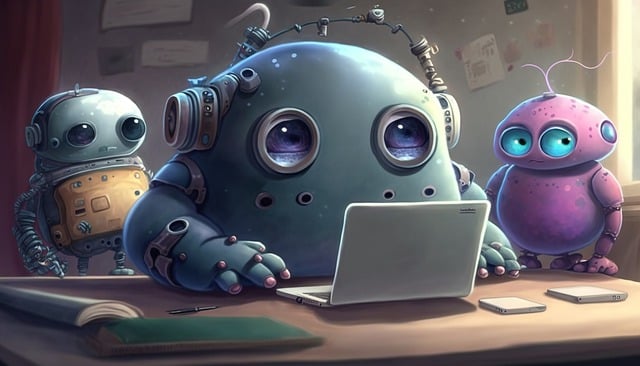OCheatsbots, powered by Natural Language Processing (NLP), are transforming customer service by offering instant, personalized support through advanced algorithms. Integrating them requires strategic planning, starting with understanding user needs and selecting suitable technology. Machine learning trains these chatbots to adapt over time, enhancing user experiences in a dynamic digital landscape.
Discover the fascinating world of ochatbots—the virtual assistants that are transforming interactions with technology. In this comprehensive guide, we’ll unravel the secrets behind their operation. From understanding core components and the power of Natural Language Processing (NLP) to exploring integration and training methodologies, you’ll gain insights into how these intelligent systems learn and adapt. By the end, you’ll be equipped to grasp the technology driving the future of human-computer interaction.
- Understanding the Core Components of oChatbots
- The Technology Behind Natural Language Processing (NLP)
- Integrating and Training Chatbot Systems
Understanding the Core Components of oChatbots

The Technology Behind Natural Language Processing (NLP)

The technology behind chatbots, particularly those using Natural Language Processing (NLP), is a fascinating blend of artificial intelligence and machine learning. At its core, NLP enables ochatbots to understand, interpret, and generate human language in a meaningful way. This process involves complex algorithms that analyze text or voice inputs, breaking them down into smaller components like words, phrases, and sentiment. By learning from vast datasets, these models can predict context-appropriate responses, making conversations with ochatbots feel natural and fluid.
Advanced NLP techniques, such as deep learning and transformer architectures, empower chatbots to grasp nuances in language, including sarcasm, jokes, and idioms. They can also adapt to different user personalities and preferences over time, continuously improving their performance. This dynamic approach ensures that interactions with ochatbots remain engaging and effective, enhancing the overall user experience.
Integrating and Training Chatbot Systems

Integrating a chatbot into an existing system requires careful planning and strategic design. The process begins with defining user needs and understanding the scope of tasks the chatbot will handle. Once this is established, developers can choose the right technology and platform for the chatbot’s creation. Machine learning algorithms play a pivotal role in training chatbots; these algorithms enable the model to learn from vast amounts of data, improving its ability to understand and respond accurately to user queries.
During training, the chatbot interacts with diverse datasets, learning from both successful interactions and mistakes. This iterative process enhances its performance over time, making it more adept at handling complex conversations. As the chatbot evolves, regular updates and testing ensure it remains effective in a dynamic digital landscape, where user expectations are constantly shifting.
Chatbots, or oChatbots, have evolved from simple rule-based systems to sophisticated AI-powered assistants. By understanding the core components, leveraging Natural Language Processing (NLP) technology, and integrating training methods, these virtual agents can provide valuable assistance across various sectors. As NLP continues to advance, chatbots will become even more adept at understanding human language nuances, making them essential tools for enhancing customer service, streamlining operations, and improving user experiences in today’s digital landscape.
